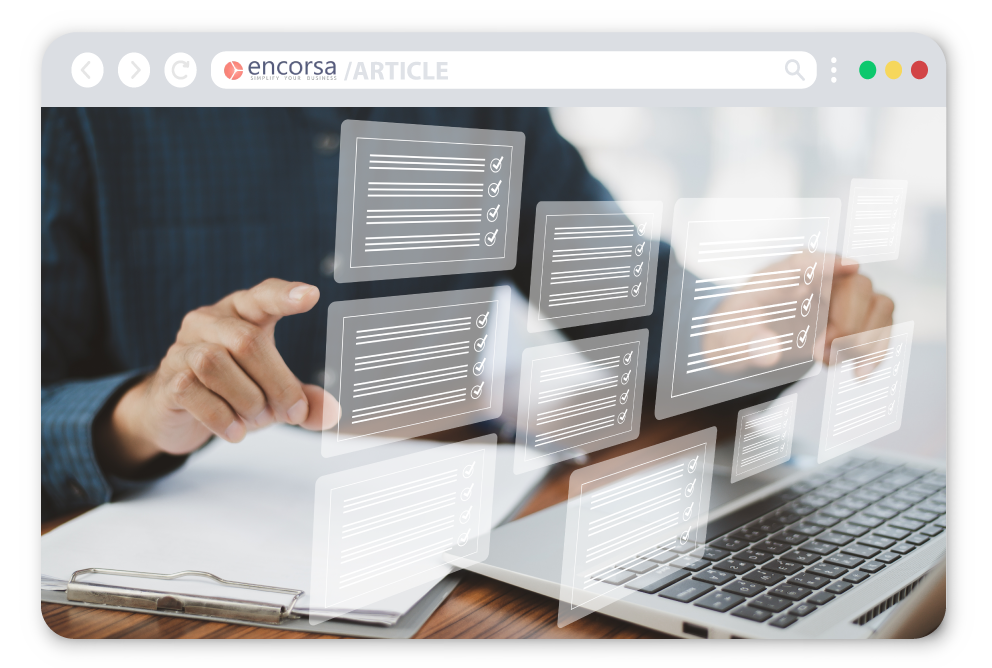
Institutions with a high volume of documents can significantly benefit from implementing the Encorsa electronic registry solution, which includes features like automated processing, electronic signing, and artificial intelligence for efficient document management. This digitalization brings multiple benefits, including reduced bureaucracy, improved interaction with citizens, and increased transparency of services.
 Author: Radu Mărgărit
Author: Radu Mărgărit

The registry is a concept familiar to anyone who has ever visited a public institution to submit or collect a document, whether it’s a financial administration office, town hall, or hospital. The role of the registry is to record an incoming document (received) or outgoing document (to be sent) so that it can be identified and referenced later. For example, Petition number 1235 from April 24, 2024. Traditionally, this registration was done in a printed register, and a stamp was applied to the document, with the registry number and date written by hand.
The electronic registry takes over the traditional registry’s role and eliminates the unnecessary consumption of paper, increases operational speed by replacing handwriting, and allows for the quick retrieval of documents, whether they are in electronic format or paper.
An electronic registry is necessary for any public institution or private company that deals with citizens/clients and handles the receipt and transmission of documents. When the volume of documents is small, simplified solutions like Excel files or simple applications can be used. Subsequently, registry or reception operators manually process the documents, scan them, and possibly perform OCR, then send them via email internally or externally. Additionally, for outgoing documents, another set of manual processes is used, such as printing documents, placing them in envelopes, manually filling out shipping documents (e.g., invoices or AWBs), as well as preparing summaries required by the Romanian Post or courier companies.
When the document volume is substantial, these simple solutions can no longer be used without a significant consumption of human and material resources. In this case, the solution is a professional electronic registry application capable of automating the processes of receiving and processing documents and automatically routing them on informational circuits depending on the type of document.
In the traditional registry, printed documents are placed in folders and then circulated through the institution according to more or less predefined routes. Sometimes, this circulation can take weeks without anyone knowing exactly where the document is. “It’s on the circuit,” “It’s being signed,” “I’ll call you when it gets back to me.” Other times, the citizen had to carry the document through the institution, and in the process, “small favors” could be attached to unblock or speed up the request: “Take the declaration to the registry to get a number, then bring it back to me for approval.” This inevitably led to a new queue and another disgruntled official who would scold you for not having a copy of some document or not correctly filling out the submitted document.
The electronic format not only allows for the rapid registration of received documents but also their further transmission on a document circuit (workflow), and at the end, the document or set of documents will be stored and archived in an electronic document repository.
A modern electronic registry solution focuses on the automated processing of documents and real-time routing through circuits, either predefined based on the document type or dynamically based on the specific nature of the document.
The drastic reduction of printed documents can be achieved by creating an environment that allows the generation of documents in electronic format from the source rather than printed format. For example, forms that citizens or clients would have to print, fill out by hand, and then send by mail can be removed from the institution or company’s website. They can be replaced with an electronic form embedded in the site or, even better, with a chatbot that captures messages and automatically fills out the form. Similarly, on the output side, as much as possible, documents will be sent via email or downloaded directly by the citizen/client from the site.
The electronic signing of documents or the electronic insertion of a handwritten signature, where the law allows it, is another solution that accelerates the processing of incoming and outgoing documents. The automatic insertion of an entry or exit stamp and date directly on the electronic document by the electronic registry application, without printing, is another way to speed up processing and reduce paper usage.
Automatic retrieval of scanned documents, OCR, and content recognition using neural networks allow for automatically classifying documents and then routing them through document circuits specific to the institution. These are another important component of a modern electronic registry solution.
Lastly, using RPA robots facilitates the automatic processing of outputs, real-time generation of AWBs for courier services, and automatic translation of documents where necessary.
Using an electronic application to control the flow of incoming and outgoing documents within an institution or company offers the following advantages:
Although it is hard to believe that in 2025, there are still companies that do not use an electronic registry for document receipt and transmission, reality often shows the contrary. If you are considering implementing such a software application or modernizing an existing one, consider a next-generation solution that includes: automatic document processing, integrated electronic signing, integration with the document circuit, integration with an electronic archiving system, and, last but not least, the ability to use artificial intelligence algorithms for automatic content recognition, chatbots for customer interaction, and robots for automated processing.